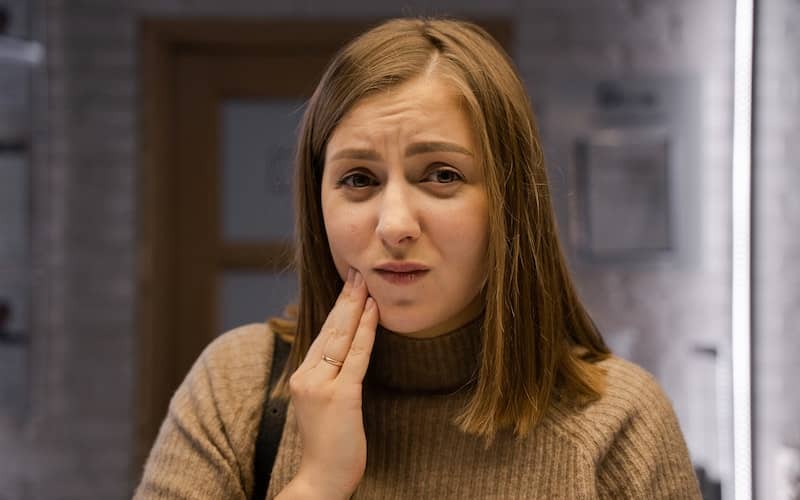Call: (810) 674-3060
Emergency Dentistry: What to Expect During Your Visit?

Imagine you’re enjoying a peaceful evening when suddenly, an excruciating toothache strikes. Or maybe you’re at a family gathering, and a child falls, knocking out a tooth. In moments like these, dental emergencies can leave you feeling stressed and uncertain about what to do next.
This blog will guide you through what to expect during an emergency dental visit. From the moment you call for help to the treatments your dentist may provide, understanding the process can ease your anxiety. Whether it’s a simple filling replacement or a more complex procedure, knowing what happens next can help you feel prepared and confident.
Emergency dentistry plays a crucial role in preventing further damage and relieving pain. Acting quickly ensures you get the proper care needed to avoid complications. Let’s explore what you need to know before and during your visit.
What Qualifies as a Dental Emergency?
A dental emergency is any situation that requires immediate treatment to relieve pain, prevent further damage, or save a tooth. Common scenarios include:
- Severe Toothaches: Intense pain, especially if it doesn’t go away with over-the-counter pain relief, can indicate a serious issue like an infection or cavity.
- Knocked-Out Teeth: A sudden injury that causes a tooth to fall out requires urgent care to increase the chances of saving it.
- Lost Fillings or Crowns: Losing a filling or crown can expose the tooth to further decay and discomfort.
- Abscesses or Infections: A swelling or pain around the gums, especially with a bad taste or fever, can indicate an infection that needs to be addressed immediately.
Signs That Require Immediate Attention
- Excessive Bleeding: If you’re bleeding from the mouth and can’t stop it, it’s an emergency.
- Pain That Doesn’t Subside: Severe or continuous pain indicates a serious issue.
- Visible Damage: Any cracks, fractures, or dislodged teeth should be assessed quickly to avoid further harm.
If you’re experiencing any of these signs, don’t wait. Visit your dentist or an emergency clinic right away.
Preparing for an Emergency Dental Visit
If you find yourself in a dental emergency, it’s important to act quickly and prepare for your visit. Here’s what to do:
What to Do Before You Go?
- Manage Pain at Home: Over-the-counter pain relievers (like ibuprofen) can help reduce discomfort while you wait for your appointment. You can also apply a cold compress to your cheek to ease swelling or pain.
- Preserve Knocked-Out Teeth: If a tooth has been knocked out, hold it by the crown (not the root) and rinse it gently with water. If possible, try to place it back in the socket or store it in a container with milk or saline solution.
- Bring Your Medical Records: If you’re visiting a new dentist, bring along any relevant medical history or medication details, especially if you have allergies or existing health conditions.
What Not to Do?
- Don’t Self-Diagnose: Do not try to diagnose the problem yourself. What may seem like a small issue could actually be something more serious.
- Don’t Try DIY Fixes: Avoid using home remedies like clove oil or aspirin directly on the tooth, as they can cause further irritation or delay necessary treatment.
- Don’t Wait to Seek Help: Even if the pain subsides, delay can worsen damage. Don’t wait longer than necessary for professional help.
Proper preparation and prompt action can help minimize complications and ensure a quicker recovery.
What Happens During Your Emergency Dental Visit?
Step 1: The Initial Assessment
When you first arrive, the dentist will assess the situation. They’ll ask you about your symptoms, the cause of the injury, and your medical history. If necessary, they’ll take X-rays to understand the damage or infection’s extent fully.
Step 2: Pain Management
One of the most important aspects of an emergency visit is pain relief. Your dentist will administer local anesthesia to numb the area and alleviate pain. In some cases, sedation options are available to help you relax, especially if the procedure is more complex or if you’re feeling particularly anxious.
Step 3: Treatment Options
Once you’re comfortable, the dentist will discuss the best course of action. Treatment depends on the nature of the emergency, such as:
- Tooth Extraction: Removal may be necessary if the tooth is severely damaged.
- Filling Replacement: For lost or damaged fillings, the dentist will replace them with a new filling.
- Root Canal: If an infection is deep within the tooth, a root canal may be needed to save it.
- Crown Placement: For broken teeth, a crown may be placed to restore the tooth’s structure.
Step 4: Follow-Up Care
After the emergency procedure, the dentist will provide instructions for aftercare. This may include pain management, avoiding certain foods, or using prescribed medications to prevent infection. Follow-up visits may be needed to ensure proper healing or to finalize restorative work.
Common Emergency Dental Treatments
Tooth Pain Relief
Toothaches can be caused by infections, cavities, or injuries. Dentists typically treat the underlying issue, such as cleaning out infected areas or filling cavities, to relieve pain. Medications may also be prescribed to ease discomfort.
Broken or Chipped Teeth
Dentists will first assess the damage if you break or chip a tooth. Minor chips may be smoothed out or filled, while larger fractures might require crowns, bonding, or root canals to restore functionality and appearance.
Knocked-Out Teeth
If a tooth is knocked out, it’s essential to act quickly. Your dentist will try to re-implant the tooth if possible, or they may use a bridge, dental implant, or partial denture as a replacement.
Abscesses and Infections
Abscesses often occur when bacteria invade the tooth or gums. Treatment usually involves draining the abscess and prescribing antibiotics. Root canal therapy may be necessary to treat an infection in the tooth’s pulp.
How to Prevent Future Dental Emergencies?
Preventative Measures
- Wear a Mouthguard: A mouthguard can protect your teeth from injury if you play contact sports.
- Practice Good Oral Hygiene: Brushing twice a day and flossing regularly can prevent cavities and gum disease, which can lead to emergencies.
- Regular Dentist Visits: Routine checkups help catch potential issues before they become emergencies.
Emergency Preparedness
- Know Your Dentist’s Contact Information: Have the contact details of an emergency dentist or clinic handy, especially during vacations or weekends.
- Keep a First Aid Kit: Keep essential items like gauze, ice packs, and pain relievers on hand for quick action.
Taking preventive steps can significantly reduce the likelihood of dental emergencies.
Dental emergencies can be frightening, but knowing what to expect during your visit can help ease your anxiety. Quick treatment from a professional can resolve the issue and prevent further complications.
Whether you’re experiencing a severe toothache, have a broken tooth, or have suffered a dental injury, don’t hesitate to seek help. The sooner you act, the sooner you’ll be on the road to recovery.




